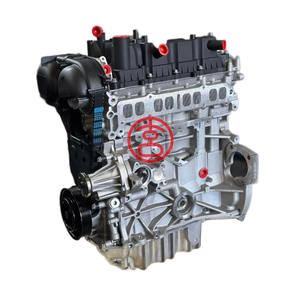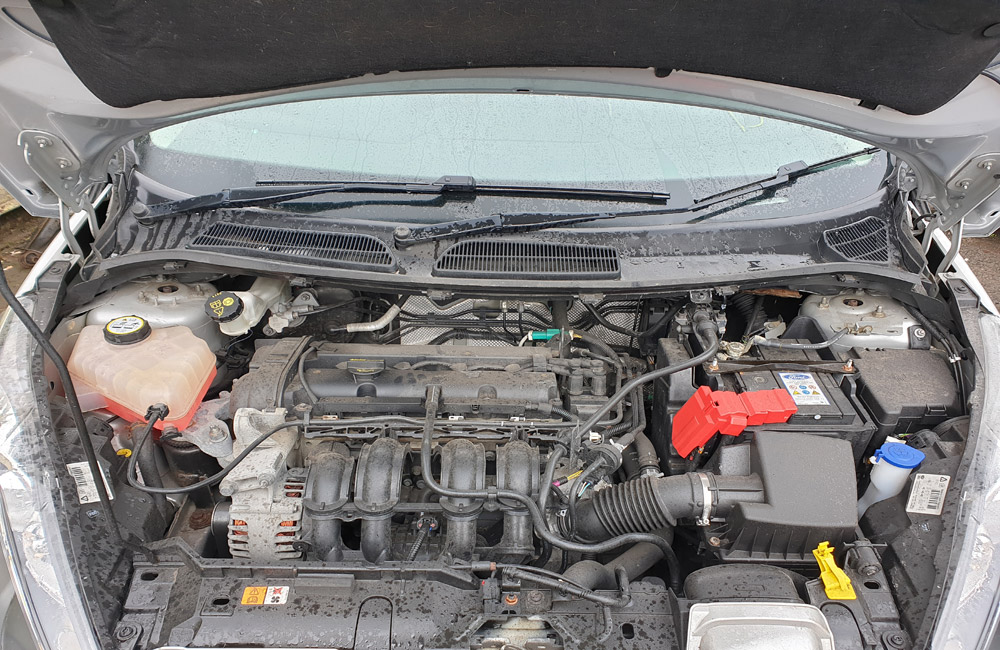Discover the Latest Ford Fiesta Engine Upgrades for Enhanced Power
Discover the Latest Ford Fiesta Engine Upgrades for Enhanced Power
Blog Article
Discovering the Advancement of Engines: From Traditional Styles to Modern Marvels
From the first vapor engines that powered the Industrial Transformation to the emergence of internal combustion engines that changed mobility, each stage has actually contributed to higher effectiveness and capability. As we take a look at these turning points, one must take into consideration how the future of engine style may unravel, challenging our assumptions of power and effectiveness.
The Birth of Engine Innovation
The arrival of engine innovation marked a critical minute in human development, changing power conversion and transport. The earliest engines emerged from the requirement to harness mechanical power for functional use, leading to the advancement of gadgets that transformed various energy forms into movement (ford fiesta engine).
The growth of the interior combustion engine and the invention of the heavy steam engine catalyzed a profound change in industrial capacities. These engines not just enhanced effectiveness however likewise increased the extent of human mobility, enabling unmatched transport possibilities. The early prototypes laid the foundation for the mechanical globe, promoting the surge of sectors and improving societal frameworks.
As engine layouts evolved, they included cutting-edge products and progressed design principles, leading the way for modern developments - ford fiesta engine. The birth of engine technology stired up a relentless quest of efficiency and power, establishing the phase for the dynamic advancement of transportation and industrial machinery that would certainly comply with
Steam Engines and Their Effect

The vapor engine's effect was specifically apparent in the transportation field (ford fiesta engine). Steam-powered locomotives promoted the rapid movement of goods and people throughout large distances, properly shrinking the geographical obstacles that had formerly prevented trade and interaction. Steamships reinvented maritime travel, enabling for quicker and a lot more reliable crossings of oceans and rivers.
In sector, steam engines powered factories, enabling automation and the rise of city centers as hubs of financial task. This shift not only changed labor characteristics however additionally contributed to the emergence of a consumer-driven society. Steam innovation cultivated developments in design and production processes, laying the groundwork for future improvements in engine style. The heritage of heavy steam engines is profound, mirroring a turning point in human resourcefulness and the unrelenting quest of progression.
The Surge of Inner Burning
Frequently overshadowing vapor power, the rise of internal burning engines marked a transformative change in transportation and sector during the late 19th and very early 20th centuries. The development of these engines, defined by their capability to shed gas within the engine itself, allowed higher effectiveness and power compared to standard steam engines. Introducing developers such as Nikolaus Otto and Rudolf Diesel played essential functions in improving engine designs, causing prevalent adoption in cars, boats, and commercial machinery.
The interior burning engine's compact dimension and More Bonuses reasonably lightweight nature facilitated the introduction of personal cars, changing specific wheelchair and reshaping city landscapes. By enabling faster travel and the efficient transportation of products, these engines catalyzed financial development and cultivated globalization. The adaptability of gas alternatives, including gasoline and diesel, further improved their charm, allowing for diverse applications across various sectors.
In spite of the ecological issues that would later on emerge, the first attraction of internal combustion innovation lay in its transformative potential. As culture welcomed this advancement, the structure was laid for modern transport systems, developing internal burning engines as a keystone of commercial development and day-to-day live throughout the 20th century.
Developments in Engine Efficiency
As internal combustion engines came to be essential to transportation and sector, the emphasis shifted in the direction of improving their effectiveness to satisfy expanding demands for performance and sustainability. Developments in engine style, product science, and modern technology have considerably added to this development.
One significant improvement is the development of turbocharging, which permits enhanced air intake, causing more complete gas burning and improved power result without enlarging engine dimension. Furthermore, variable valve timing systems have actually been implemented to optimize engine performance across different RPM varieties, therefore enhancing fuel performance.
The use of innovative fuel shot innovations, such as straight Recommended Site injection, has additionally played a crucial function. This technique allows for even more precise control over the fuel-air mix, advertising better combustion and lowering emissions. In addition, light-weight materials, consisting of light weight aluminum and composite elements, have been taken on to minimize total engine weight, bring about enhanced efficiency.
These advancements show a more comprehensive fad within the auto market, where the synergy between design development and environmental factors to consider drives the ongoing quest for higher performance in internal combustion engines. Therefore, contemporary engines are currently a lot more powerful, cleaner, and reliable than ever, leading the way for an extra sustainable future in transportation.
The Shift to Electric Power
With expanding worries over environmental effect and fossil gas reliance, the automotive market is experiencing a considerable shift towards electric power. This change is driven by a mix of technological innovations, regulatory pressures, and changing consumer choices. Electric lorries (EVs) offer a compelling alternative to traditional inner combustion engines, boasting minimized greenhouse gas exhausts and reduced operating expense.
The rise of battery technology has actually been a game changer, with lithium-ion batteries coming to be extra efficient and affordable. Enhanced energy thickness and faster charging capabilities have actually made EVs a lot more sensible for everyday use. Additionally, governments worldwide are executing incentives and setting ambitious targets for phasing out fossil gas automobiles, consequently speeding up the fostering of electrical power.
As billing framework expands and battery modern technology proceeds to enhance, the change to electrical power is positioned to reshape the auto landscape, promoting sustainability and development in the years to come. The future of transport is electrical, and the energy is undeniable.
Conclusion
The advancement of engine technology stands for a substantial trajectory of innovation that has actually profoundly influenced transportation and industry. From the foundational steam engines to the transformative inner combustion engines, each growth has added to enhanced flexibility and economic development. see page The existing shift toward electrical power emphasizes a critical commitment to sustainability, driven by improvements in battery innovation. This continuous development not only shows altering societal requirements but likewise highlights the potential for a cleaner and a lot more reliable future in engine layout.

Report this page